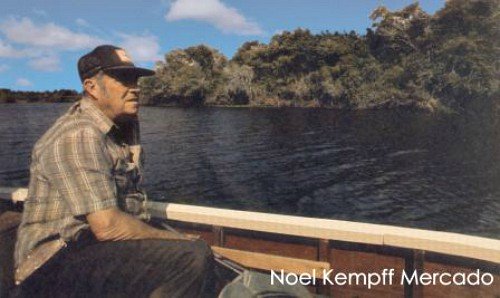The following are some famous scientists in Bolivia. You can read about more famous Bolivians by visiting our
Famous People from Bolivia home page where you'll find many other categories. You can ask questions about a famous Bolivian person or
add another famous person from Bolivia.

Photo Credit: Lorena Kempff Saucedo
Noel Kempff Mercado
A self-taught naturalist and conservationist born in Santa Cruz de la Sierra, his love of nature led him to establish the Santa Cruz Zoo to educate and create awareness about the need for conservation. He also established the Santa Cruz Botanical Gardens, and worked tirelessly to convince the government to set aside two of Bolivia's most important protected areas, now known as Amboro National Park and Noel Kempff Mercado National Park. The Museum of Natural History was named after him. He served as a university professor and wrote various botanical and zoology books. His work led him to explore the border with Brazil, where, in 1986, he was assassinated by drug traffickers. He received numerous distinctions, among them the Encomienda de Número de la Orden Isabel La Católica, awarded to him posthumously by the King of Spain. Today his work is continued by a foundation established in his name, which will forever be associated with environmental conservation. Lea la biografía de Noel Kempff Mercado en español aquí.
José Steinbach
A naturalist of German origin, he arrived in Bolivia in 1904 to explore the wealth of biodiversity in the forests of Santa Cruz, the Chaco region, and the Altiplano. He ended up settling in Eastern Bolivia where he started a family with his Santa Cruz-born wife. He is one of the most recognized naturalists internationally. His achievements can be appreciated in museums of natural history, botany and zoology in Europe. Because he contributed to classifying fauna species which, several include his name in their Latin scientific names. He died in 1930.
Martín Cárdenas
A botanist from Cochabamba born in 1899, he is amongst the first and most prolific nature scientists from Bolivia, as a new graduate of Natural Sciences and Chemistry, he would study flora as a pastime, and was introduced to a Swedish botanist that encouraged him to specialize in flora, for which he collected and classified round six thousand five hundred specimens, as well as identifying over a hundred new species of the characteristic cacti plants of the Andes amongst other achievements. Because of that, he gave his name to over fifty species’ scientific nomenclature. He was also an agronomist that pioneered new cultivation methods in the country, and won international prizes and dedications from respected botanical institutions and scientists.
Iván Guzmán de Rojas
Son of painter Cecilio Guzmán de Rojas, he is an industrial engineer and physicist from La Paz, born in 1934. He studied in the state university of his city and then in Germany, specializing in physics theory and applied mathematics. In Bolivia, he created three university careers, Mathematics, Physics and Chemistry, in the San Andrés University as well as an experimental laboratory. During the late 70s and 80s, he began researching the mathematical algorithms the Aymara language contained, which was the basis for creating the Atamiri-MT System, a software for simultaneous online translation of multiple languages based on Aymara. Later, that system was improved to include an instant messaging software able to simultaneously translate thirty languages, which he named Qopuchawi, that is distributed as freeware. Currently, he continues with his research on language and is director of an institution he founded.





